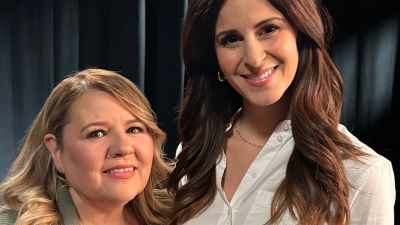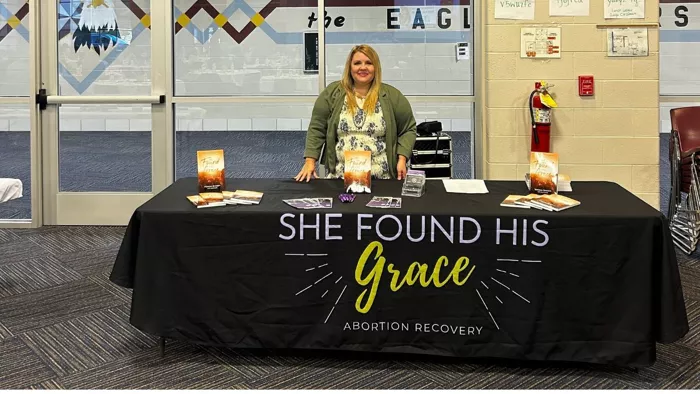Persecution
Raped, taken for abortion at 13, this pro-lifer is helping post-abortive women find grace, healing
Serena Dyksen had never even heard the word “abortion” until a family doctor recommended that her parents take her for one at the age of 13 after she was raped and impregnated by her uncle.
“One day, I was on the school bus, and I just blurted out to someone what had happened to me,” Dyksen told The Christian Post in an interview. “I think I was just at a point in my life where I needed help.”
Becoming pregnant from her uncle in the late 1980s was something Dyksen tried to hide at first out of shame. But a guidance counselor later pulled Dyksen out of choir class to ask if a family member had assaulted her. At first, the child didn’t want to admit she was assaulted, but she eventually did. The girl’s parents came and took her to the family doctor, who referred them to an abortion facility.
Dyksen’s parents then brought her to the Women’s Pavilion Center in South Bend, Indiana, one of several facilities operated by Ulrich George Klopfer, who died in September 2019 and made headlines after authorities in Will County, Illinois, were alerted to the discovery of over 2,000 fetal remains at his home. Additional remains were later discovered in the trunk of the abortionist’s car.
Fast forward to today, Dyksen uses her experience as a rape victim who hemorrhaged after the adults in her life persuaded her to go through with an abortion as a child to lead other women who underwent abortions find healing and forgiveness in their lives through the ministry she founded, She Found His Grace.
‘I hemorrhaged everywhere’

Reflecting on her abortion experience, Dyksen remembered that the staff at the Women’s Pavilion Center separated her from her parents during the abortion.
At the time, Dyksen thought she and her family were at a doctor’s office, one that she noticed was rather dirty, but she believed that the staff would help her.
“And I didn’t know how they were going to help, so when they asked if I was ready for the abortion, I just nodded my head,” Dyksen explained.
When Klopfer came into the room to perform the abortion, Dyksen said he looked at her and remarked, “This won’t take long.” Later, when Dyksen started screaming during the abortion due to the pain, she said Klopfer told her to shut up.
From another room in the facility, Dyksen’s mother could hear her daughter screaming. When she tried to go and help her daughter, according to Dyksen, the staff called the police and made her mother leave the clinic.
After the abortion, Dyksen was placed in a recovery room with other women, but no one would look at one another. The room was filled with what Dyksen described as “nasty, brown vinyl recliners.”
“When I stood up, I hemorrhaged everywhere, and my dad carried me out,” she recalled. “No one came to check on me. There was no follow-up care, none of that.”
The abortion experience would continue to haunt Dyksen and her family for years to come.
“We were already kind of dysfunctional, you know, a lot of brokenness,” the ministry founder said. “This completely took it over the edge. My mom ended up checking herself into the psych ward. And then my dad eventually left our family.”
At 16, Dyksen became pregnant again, this time by her boyfriend at the time, Bruce. The two went to a Planned Parenthood in Elkhart together, having learned about the organization after representatives visited their school to teach sexual education.
The pair didn’t know much about Planned Parenthood, and they thought it was just one of many potential resources.
“So we went to [Planned Parenthood] and they said, ‘You’re young, you’re in school, and you’re poor. You should abort your baby,'” she said.
After the appointment, Dyksen sat outside in the parking lot with Bruce. While Bruce had been raised in a religious home, the church he attended didn’t talk about abortion. It was while the couple discussed what to do next that Dyksen decided to tell Bruce about the abortion she had at 13.
“And he said, ‘I don’t know how we’ll figure it out, but we’ll figure it out,'” she remembered. “And we chose life that day.”
Today, Dyksen and her husband have been married for over 30 years, but the lasting trauma from Dyksen’s abortion almost destroyed their marriage. She also suffered a miscarriage at the age of 23, which awakened some of her unresolved pain.
“And even then, I didn’t connect the dots that I had a double grief because of the abortion,” she explained. “I eventually had an ovary rupture, and I nearly bled to death. And then by 29, I had to have a complete hysterectomy.”
Dyksen turned to drugs and alcohol to help numb the pain, which she didn’t realize at the time was connected to the abortion she had years ago. As for Bruce, Dyksen knew that he could see she was hurting, but he didn’t know how to fix the problem.
The couple sought counseling, and gradually, God restored their marriage. During the counseling appointments, Dyksen opened up about the trauma that resulted from her rape, not the abortion.
‘Now is the time to tell the rest of your story’
In 2019, a friend invited Dyksen to see the movie “Unplanned,” which tells the story of how Abby Johnson, the former director of a Planned Parenthood clinic, left the abortion industry and became a pro-life advocate. The film resonated with Dyksen, who could relate to the grief Johnson felt after her two abortions.


